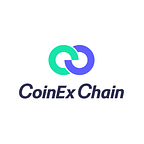CoinEx Smart Chain(CSC): Understanding Layer 0 and Layer 1
Public chains are permissionless and decentralized frameworks that enable the creation and transfer of digital assets. Public chains comprise three distinct layers (layer 0, layer 1 and layer 2) that exist independently and also work harmoniously.
In this article, we’ll look into Layer 0 and Layer 1 public chains, discussing their distinctive features and characteristics. Furthermore, we’ll explore CoinEx Smartchain, an innovative public chain that operates at Layer-1, examining its features and potential.
What is a Layer 0 Public Chain?
The foundational blockchain network is built on Layer 0, which includes both software and hardware elements including servers, data centers, and internet infrastructure. It serves as the framework for the entire blockchain system and enables efficient operation.
Public chains that operate at Layer 0 are designed to be highly scalable and efficient. They can handle large volumes of transactions quickly and securely. Some examples of public chains that operate at Layer 0 include Polkadot and Kusama.
Polkadot is a Layer 0 network that allows for the interoperability of different blockchain networks. Polkadot facilitates the development of custom blockchains that can communicate with each other, providing greater flexibility for developers and users. Kusama, on the other hand, is a Layer 0 network that is built as a companion to Polkadot. It is designed to be a more experimental network where new technologies can be tested before being deployed on Polkadot.
What is a Layer-1 Public Chain?
Layer 1 is the primary blockchain layer that is commonly known among people. It encompasses the blockchain network, comprising the consensus mechanism, smart contracts, and the native cryptocurrency. Public chains that operate on Layer-1 are fully decentralized, with no central authority governing the network.
Layer 1 chains are developed to ensure a high level of security, decentralization, and resistance from any central authority or regulatory system. These chains depend on a distributed network of nodes to verify and validate transactions done on the chain and uphold the accuracy of the blockchain ledger.
There are several famous public chains (blockchain) platforms that function at Layer 1, offering different features and capabilities. Some of the famous Layer 1 public chains include:
1. Bitcoin: Bitcoin, the first and most renowned blockchain, is a decentralized, peer-to-peer ledger system that employs cryptography to enable secure and immutable storage and transfer of its cryptocurrency, bitcoin, in a decentralized manner.
2. Ethereum: Ethereum is a public chain (blockchain) that allows for the creation of decentralized applications (DApps) and smart contracts.
3. CoinEx Smart Chain: CoinEx Smart Chain also known as CSC is an innovative public chain that functions at Layer 1. The consensus protocol utilized by CoinEx Smart Chain is Proof-of-Stake(PoS). CoinEx Smart Chain is designed to operate in a decentralized and energy-efficient manner, providing developers with a friendly platform for developing decentralized applications.
CET(CoinEx Token) is the native token of the blockchain network used for transaction fees and as a governance token. CoinEx Smartchain also supports smart contracts, which enables developers to create and deploy decentralized applications (dApps) on the network.
CoinEx Smartchain Features
1. Full EVM Compatibility: Ethereum Virtual Machine (EVM) compatibility is one of the standout features of CoinEx Smart Chain. This simplifies the process of migrating decentralized applications (DApps) built on the Ethereum network to the CSC blockchain. This feature enables DApps to be smoothly moved to CSC, providing developers and users with a seamless transition experience.
2. Permission-free and Decentralized: Another important feature of CoinEx Smart Chain is its permission-free and decentralized nature. The network supports up to 101 nodes, which are selected based on the amount of CET that is staked by validators. This means that anyone with the required amount of CET can become a validator and participate in securing the network, without requiring permission from a central authority. This decentralized approach helps to ensure the security and integrity of the blockchain network.
3. High Performance with Low Fees: CoinEx Smart Chain was engineered to offer exceptional performance and low gas fees, with block generation taking just a few seconds and transaction fees being remarkably low. As a result, users can benefit from fast and cost-effective transactions on the network, which makes it a compelling choice for various use cases such as decentralized applications that necessitate high throughput and low transaction costs.
To sum up, public chains are an essential part of the blockchain ecosystem, as they provide a decentralized platform for creating and exchanging crypto assets. The birth of public chains is inseparable from the various layers of blockchain. That said, blockchain involves complex technologies, which is why blockchain app developers and crypto users must learn and master the layers involved in public chains (e.g., Layer 0 and Layer 1), in order to jointly promote the progress of the public chain category.
